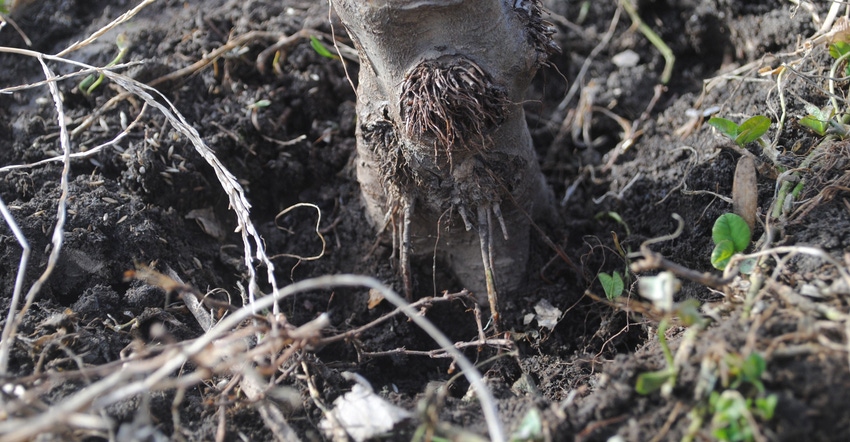
Do you have a small-caliper tree about an inch in diameter that hasn’t’ grown much since planted two to three years ago? Being in the arid Great Plains and Mountain states, we figure the tree needs more water. Often the problem, however, is that the tree was planted too deep.
Our common inclination is to get those roots into the ground. However, if you walk through a forest, you will notice that mature trees usually have part of their root flare — that area where the main stem tissue transitions to root tissue — above the ground. When we plant trees, we want to mimic natural conditions like that.
Foresters normally recommend that the root flare and primary lateral roots at the top of the root zone on the tree need to be at or near the soil surface. It isn’t that uncommon for certified arborists or professional foresters to be called to look at trees that are declining, and they find that the tree has been planted 4 to 8 inches or more too deep. The root flare is far beneath the soil surface.
Planting too deep puts the young tree under stress. While it won’t kill the tree immediately, the act of planting too deep will cause the tree to decline over time.
In a few years, as the terminal buds die back, landowners often blame insect infestation, winterkill or drought for the tree decline. However, one look at the soil surface around the tree trunk could tell you that the tree is planted too deep. While those other concerns could certainly be the issue, the issue of planting depth should be investigated.
If you find a tree in decline, dig around the trunk to find the root flare where the root ball of the tree begins. If it is far below the surface, this could be the reason for the decline. The way to prevent the problem is to plant correctly to begin with.
If you are planting a container tree, don’t rely on the potting soil level in the pot to give you the correct planting depth in the ground. Carefully remove the container from the root ball. Peel away the potting soil to find the root flare. Dig a shallow, but wide hole in the ground where the tree is to be planted. Spread the roots out. Place the tree into the hole and backfill, gently packing the soil and potting soil from the container carefully around the roots. Make sure the root flare is just barely visible above the soil surface. Then, cover the soil with a thin layer of mulch.
Most arborists favor wood mulch, because it allows air and water to infiltrate to the tree roots. And as it decomposes, the wood mulch releases nutrients into the soil. Of course, there are many considerations when planting a tree around the farm and ranch, but planting depth is a common mistake that can have major tree health consequences over the long haul.
About the Author(s)
You May Also Like






